You’ve heard time and time again that email marketing is the key to gaining customers and promoting interaction between visitors and your site. But how can you tell if your efforts are working? In fact, how can you tell if they’re doing anything at all?
Many email distribution services allow you to track open rates and bounce rates, but what other indicators do you need to track to make sure you’re on the long-term track to success? There are several email marketing indicators every business owner should be tracking to ensure emails are going where they should, and inspiring just the right amount of attention.
What Are Your Email Marketing Goals?
You could, potentially, track every single metric of email marketing. In fact, when you first get started, it might be very tempting to analyze every possible detail of your campaign. While learning the ropes and seeing the real-time effect of your email efforts can be very helpful, you’ll also want to be aware of how you’re spending your precious time. After all, the term “Return On Investment” doesn’t just refer to money!
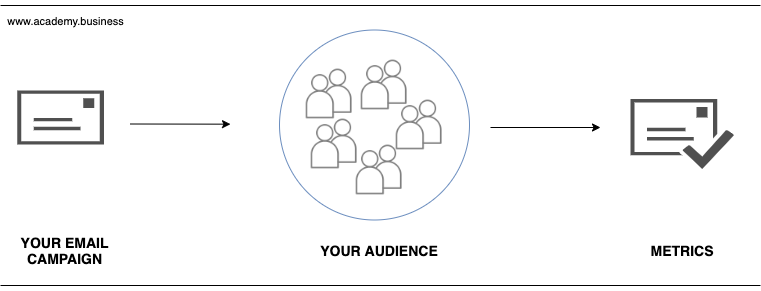
Identifying the goals for your email marketing campaigns will help you narrow down what metrics to measure, as well as how you’ll know when your campaign is successful. Consider the following possible goals, and how they might relate to your own:
- Are you sending emails with the intent to drive more visitors to your site?
- Do these emails contain business information, or details to help others identify you as an authority in your niche?
- Would you prefer to establish your brand identity through email?
- Instead, are you looking to turn leads into clients as quickly as possible?
- What about retaining customers, including those who have abandoned carts, or have made previous purchases from your site?
Each of these actions is measured in a different way, so knowing what type of outcome you would prefer will help guide the indicators you track.
Types of Email Marketing Indicators
The top types of indicators you’ll want to track are:
- Open Rate
- Clickthrough Rate
- Conversion Rate
- Sharing/Forwarding Rate
- Bounce Rate
- List Growth Rate
In addition to these indicators, you’ll also want to track your overall return on investment, or ROI. This figure will include many factors, but is a good number to keep in mind when tracking how much time and money you spend, versus how much comes back.
Let’s look at each of these email indicators individually.
Open Rate
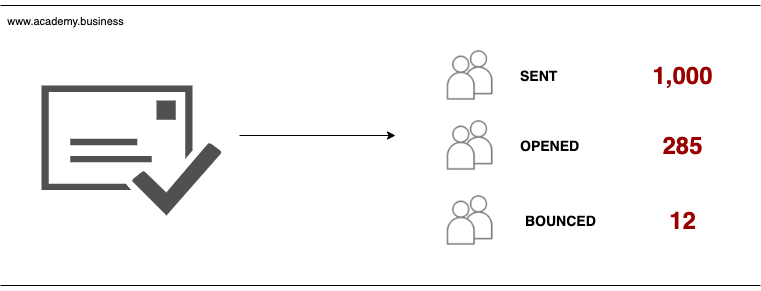
The first indicator you should check for each email you send is the Open Rate. The email open rate is calculated by your email marketing service provider when your email is opened, and some kind of action is taken on it.
Open rate is calculated by dividing the number of emails that were officially opened (by this definition), by the number of emails that were successfully delivered. So the full equation would be:
OPEN RATE = number of emails opened / (number of emails sent – number of emails that bounced).
Open Rate Formula
Clickthrough Rate
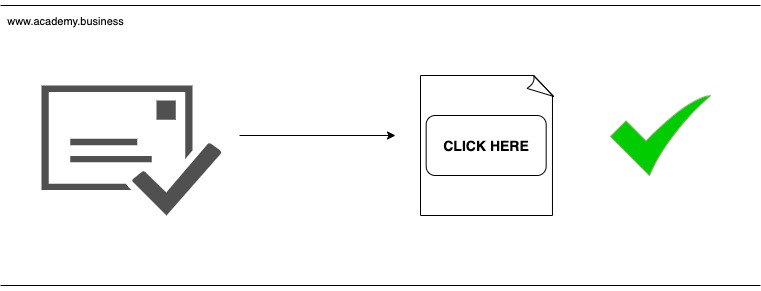
You should also examine the clickthrough rate. This measures how many people click on the links in the emails you send. If you’re sending links to your website to encourage interaction, establish authority, or make a sale, you definitely want to know if subscribers are actually clicking on those links.
To calculate your clickthrough rate, divide the number of clicks from that email (as derived from your email delivery service and website metrics) by the number of emails that were delivered.
CLICKTHROUGH = number of clicks / number of delivered emails
Clickthrough Formula
The higher your clickthrough rate, the more people want to interact with your site. Make sure that your content is compelling, so that people will be interested in learning more, and that your site loads easily once the link is clicked, so people don’t feel like they’re wasting their time on a wild goose chase!
Conversion Rate
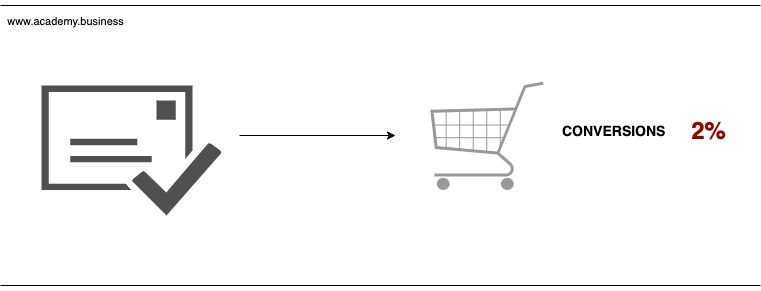
Next is the conversion rate. As the name suggests, this measures how many email subscribers then go on to your site to perform a desired action, such as purchasing products or services, requesting a quote, downloading a form or eBook, and more.
To determine your conversion rate, divide the number of conversions you received by the number of successfully delivered emails.
CONVERSION RATE = number of conversions / number of delivered emails
Conversion Rate Formula
The number of conversions can be pulled from your website results, for example using a tracking pixel. Focus on those metrics you wish to measure specifically, such as sales, requests, etc. This will help you narrow down how your efforts are influencing others to interact with your site.
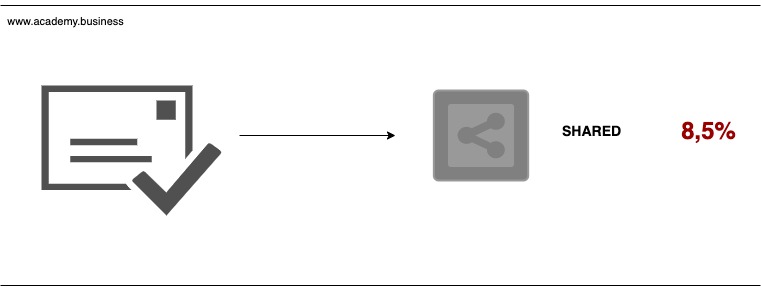
The share/forward rate refers to how frequently email recipients are sharing your email with others. This can be particularly helpful when you run a special event or sale, because those are commonly forwarded emails. In fact, your goal should be to have your email list share those deals!
Your email tool should be able to report on how many times each email you send is forwarded, and dividing that number by the total of emails sent can help you see the overall rate at which your emails are shared.
Bounce Rate
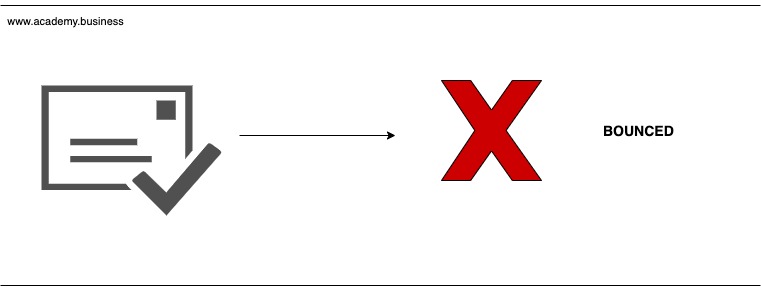
The bounce rate is very important, because this tells you how many of the emails you send are not delivered.
There are two different types of bounces. A “soft bounce” means that the recipient is having some sort of temporary trouble with your email arriving in their inbox. Usually this is due to a technical error, or having a full inbox.
A “hard bounce” means that the email address is not valid. This can be due to anything from a fake email address or a simple typo or misspelling when a subscriber entered their email address.
Whether or not you’re paying attention to your bounce rate, your internet service provider is. Too many bounces, and it might start to look like your site is not legitimate. Once an email address bounces, be sure to remove it from your list (unless your email management system does it for you).
Read also: What Is Bounce Rate? Definition and Meaning
List Growth Rate
The last major indicator to track is your list growth rate. Your business’ success depends upon its growth, and learning how quickly your email subscription list is growing can help you track that growth.
The general rule for large lists, is that your subscriber list should grow by at least 2% each year, and tracking your list growth rate throughout the year will help you determine if you’re on target for this rate. If not, you might have some strategizing to consider.
To calculate your list growth rate, you’ll want to choose a specific time period. Within that time period, find out how many people opted-in to your list, and how many people unsubscribed, or were removed due to bounce. Subtract the lost contacts from the gained contacts, then divide that number by the total number of email addresses throughout that time period.
Again, these will be numbers you’ll need to pull from your email marketing platform.
Conclusion
Depending on the overall goals for your email marketing campaign, you might want to track other factors as well. However, these are a few common indicators that can help you establish whether your emails are being received, whether subscribers are taking action upon them, and how your list is fluctuating and growing over time.
Armed with this information, you’ll be able to plan new marketing strategies and try some A/B testing to determine how you can improve upon each of these numbers over time.










[…] Read also: Key Email Marketing Indicators you should be Tracking. […]
[…] own subscribers, as well. Notice when people order from your site over and over again. Pay attention to who opens every newsletter, comments on every blog post, and shares every Facebook post. Respond to them. Thank […]